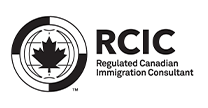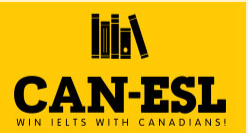
Express Entry and Work Experience: How Does It Shape Your CRS Score?
For aspiring Canadian immigrants via the Express Entry system, understanding the Comprehensive Ranking System (CRS) is paramount. One recurring question is: How does my work experience, specifically my National Occupation Classification 2021 (NOC 2021) code, influence my CRS score?
NOC and Its Impact on CRS
The NOC 2021 code linked to your professional background doesn’t directly tweak your CRS score unless you’ve secured employment in Canada upon arrival. Yet, the significance of NOC codes within Express Entry, especially concerning category-based Express Entry draws and Provincial Nominee Programs (PNPs), cannot be understated.
Interested in gauging your Express Entry eligibility? Get a Free Express Entry Assessment here.
Cracking Open the CRS
The federal government employs CRS scores to rank Express Entry candidates for the Canadian Experience Class (CEC), Federal Skilled Worker Program (FSWP), and Federal Skilled Trades Program (FSTP). Before the actual Express Entry draw, candidates are assessed based on their CRS scores, with the top scorers receiving Invitations to Apply (ITAs) for Canadian permanent residence (PR).
Understanding NOC Codes
The NOC system categorizes jobs based on “main duties, educational requirements or other relevant details.” Every job type receives a distinct NOC code, symbolized by a five-digit number.
NOC’s Role in Standard Express Entry Draws
For standard Express Entry draws, your NOC can potentially elevate your CRS score. Under the CRS’ Additional Points (Category D), candidates with pre-arranged employment in NOC Major Group 00 (comprising “Senior Management” roles) gain an extra 200 points. Those with job offers in other NOC categories (0, 1, 2, or 3) earn an additional 50 points.
This can significantly enhance your chances of acquiring an ITA for Canadian PR through standard Express Entry draws.
Category-Based Express Entry Draws and NOC
The government handpicks candidates with recent experience in specific in-demand sectors, such as healthcare; STEM (Science, Technology, Engineering, and Mathematics); transport; trades; and agriculture/agri-food, for category-based draws. Each occupation in these sectors is affiliated with a unique NOC, impacting eligibility.
For instance, eligible professions for 2023 in select categories include:
- Healthcare: Dentists (NOC: 31110); Massage Therapists (NOC: 32201)
- STEM: Architects (NOC: 21200); Engineering Managers (NOC: 20010)
- Transport: Transport Truck Drivers (NOC: 73300)
- Trades: Residential and Commercial Installers and Servicers (NOC: 73200)
- Agriculture: Butchers – Retail and Wholesale (NOC: 63201)
NOC Codes and Provincial Nominee Programs
Each Canadian province and territory (excluding Quebec and Nunavut) operates its Provincial Nominee Programs (PNPs), targeting specific skillsets and work experiences to address regional labour market needs. By aligning your NOC code with a province’s in-demand occupations, you amplify your attractiveness as a potential immigrant.
For instance, in 2022:
- Ontario targeted Nurse Aides, Transport Truck Drivers, and Construction Trades Helpers via the Ontario Employer Job Offer: In-Demand Skills Stream.
- British Columbia sought Nurses, Physicians, and Psychiatric Nurses through the Skills Immigration: Healthcare Professional Category.
- Alberta opened doors for Farm Workers via the Alberta Farm Stream.
In Conclusion
Understanding the nuances of NOC codes and their relation to CRS scores and PNPs can greatly improve your chances of immigrating successfully to Canada via the Express Entry system.
For more detailed insights and to embark on your Canadian immigration journey, keep exploring GuideMeImmigration.com. We’re here to guide your way!







